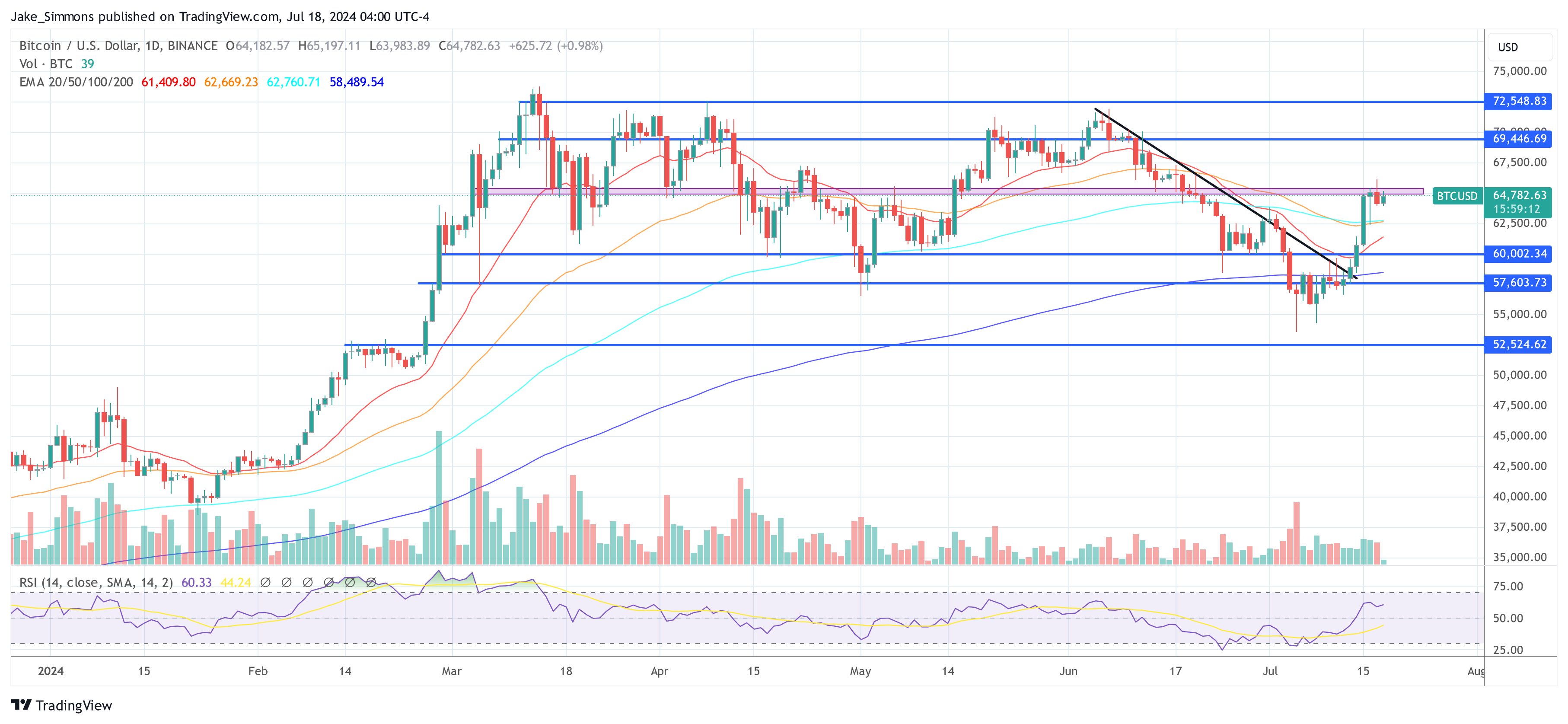In a prediction shared via YouTube videoJoe Burnett, Senior Product Marketing Manager at Unchained Capital, makes a strong case for Bitcoin to reach a $750,000 valuation. According to Burnett, the market may be substantially underestimating Bitcoin’s potential this cycle, often losing sight of the broader context within the global financial ecosystem.
Why Bitcoin Could Rise to $750,000
Burnett begins by addressing a common oversight of market analysis, which typically pits Bitcoin’s current cycle against historical performance, without considering the evolving market context. “I think it’s possible that a lot of people are underestimating Bitcoin this cycle,” Burnett said, emphasizing the need to view Bitcoin through the lens of its relative position in overall global wealth.
A key part of Burnett’s argument is the HODL model created by the Rational Root, which he discussed in detail in the ‘What Bitcoin Did’ podcast. The model points to a critical shift in 2020, coinciding with Bitcoin’s third halving – an event that reduces the number of new bitcoins generated and thus awarded to miners for verifying transactions.
Related reading
Burnett explains: “This model is fascinating because it shows a logical turning point that occurred in 2020 around the third halving. It highlights that illiquid supply as a percentage of total supply is at an all-time low, and has been slowly rising since then.” He said this reflects a shift where Bitcoin is increasingly in the hands of long-term holders rather than being circulated by miners and speculators.
After 2020, Burnett argues, Bitcoin has entered a new phase characterized by a declining supply of liquid coins. “Until the third halving, Bitcoin was basically just distributing coins through proof of work mining; almost 90% of all coins were mined in 2020,” he explains. The subsequent reduction in the production of new coins after the halving has led to a gradual transition from a freely circulating supply to a more tightly held holding.
Burnett’s prediction also uses a comparative analysis with gold, which is traditionally seen as a robust store of value. He challenges this idea by highlighting the flaws in gold’s economic mechanisms, particularly the 1% to 2% annual supply increase that brings constant selling pressure. “Gold has a negative feedback loop as it is not as scarce as Bitcoin. Hundreds of billions of dollars worth of new gold are mined every year,” Burnett points out, arguing that this reduces gold’s appeal as an investment.
Related reading
Conversely, he describes Bitcoin’s halving events as a “positive feedback loop,” where the decline in new supply every four years inherently drives price appreciation and drives new waves of adoption. “The amount of new Bitcoin mined will be halved. This repeats until no newly released Bitcoin is mined,” he adds, indicating a built-in scarcity that increases its value over time.
Burnett zooms out to a global scale and refers to the total global wealth of almost a billion dollars, of which Bitcoin’s current market capitalization is only a fraction. He claims that Bitcoin’s market share is poised to expand significantly, potentially putting it in control of a significant portion of global wealth.
This is in stark contrast to the more conservative expectations of several experts, who see Bitcoin barely crossing the $100,000 threshold in the near future. “That said, the ‘concept of diminishing returns’ can very easily be flawed. We live in a world with almost $1 trillion in total global wealth and Bitcoin is 0.1% of that,” Burnett said.
He concludes with a quote from Michael Saylor: “All your models will be broken,” adding, “Anything under the size of gold is absurdly early.” Gold parity is now around $750,000 per Bitcoin, meaning Bitcoin’s market size would just reach the market size of gold.”
At the time of writing, BTC was trading at $

Featured image created with DALL·E, chart from TradingView.com

